The 50 States Project is a series of candid conversations with interior designers across the country about how they’ve built their businesses. This week, Greenville, North Carolina–based designer Carley Page Summers tells us how she found stress-free success on Instagram, why she only wants to charge for her time, and how she’s built her brand by photographing all of her own work.
Was design always something you wanted to pursue professionally?
Not at all, but I did grow up around interesting interiors. My family is from High Point, North Carolina, and my grandfather was a furniture designer in the 1950s, ’60s and ’70s. My mom was also very into design—she didn’t do it for a living, but she helped all of her friends.
I was always artistic, so I went to fine arts school, but I had a really tough time in college. I struggled with addiction for about seven years and didn’t end up finishing my degree at my first college. I went to treatment a couple of times, and then went to Florida and got sober. Then I moved to Port-au-Prince, Haiti, and served as a missionary for half a year, which is where I picked up a camera for the first time and started my journey in photography. I ended up moving to West Palm Beach after Haiti and finished my fine arts degree at a small university there.
Because of my interest in photography, I was shooting portraits and weddings. Then I started decorating and styling my first home. That’s where I got a little bit of traction—designers saw what I was doing, and I started styling and shooting interiors for them in 2014 or 2015. I realized I understood the composition of a shot because I was a painter and that I could help an interior designer complete the shot by looking through the lens. I created an inventory of styling goods and tons of art, and I was a two-in-one—I created this a-la-carte type of styling and photography business for myself. I was able to travel all the way to Morocco to style and photograph sets for other people, and that’s how my Instagram grew.
Was that exposure what sparked your interest in becoming a designer?
I realized that I had an eye. I love to learn, and I realized that I could learn to do what these interior designers were doing. By that time, I had grown my Instagram to around 50,000 followers as a photographer and a stylist, and I started offering virtual design and styling services through my Instagram in 2017.
So the entire business was virtual?
I started my business virtually because that is where my client base was. Because I could see things through a camera lens, I could see it through a video lens [on a FaceTime call] and help people. I didn’t have the skills with rendering software and all that, but I can draw, so I would draw things and send email packages for my clients. I ended up moving back to my hometown of Greenville, North Carolina, and got an office downtown, which is when I started getting local clients. That’s when I also realized I needed to start to hire people.
What did that look like in the beginning?
As designers, we feel like we have to do everything on our own or figure everything out. I realized the best avenue for me was to hire someone to complete the task that I wasn’t good at. I hired one young lady that helped me get all my organizational systems in shape because I’m such an artist and knew I needed help. After she moved on, I hired a junior designer who was super talented. She was able to do all the 3D renderings and computer tasks that I was not able to do—I could see it, but I didn’t know how to complete it. She’s been such an asset to my business and helped us grow. We also started an intern program, which helped a lot because we are located right next to East Carolina University. Our interns have been an asset to us because they’re in the process of learning AutoCAD, SketchUp and Chief Architect. My senior designer has been able to impart [knowledge to] them and answer their questions, and we ended up hiring one of our interns.
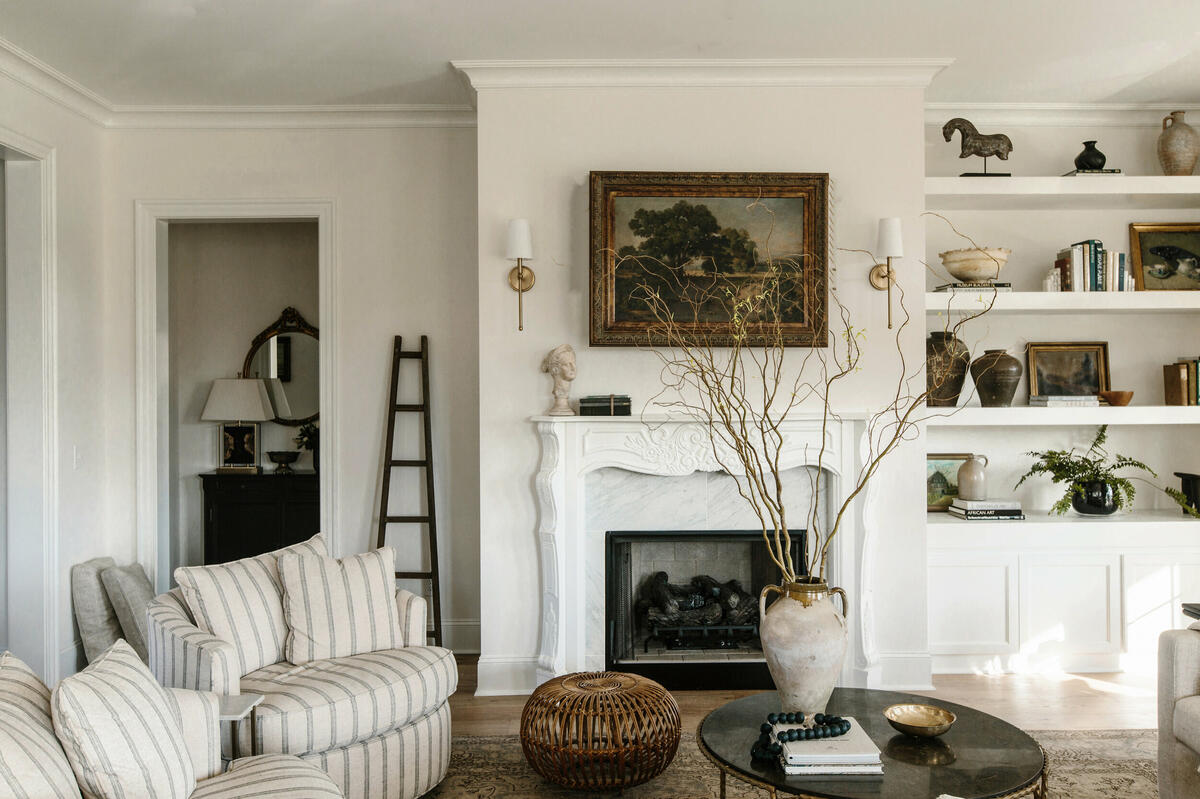
Now there are so many digital tools that want to be a platform for designers to work virtually, but when you launched the virtual piece of the business, you must have been creating your own systems.
Yes—I’m even on one now! But back then, we had vision boards for each client. I would just FaceTime with them, and then do a follow-up with a spreadsheet of items for their approval. Now there are all these systems that we use [for that process] that are super beneficial.
We don’t take virtual clients anymore, either, except on The Expert, which reached out to me in early 2020, right when they were starting, because they knew that I already offered virtual services—I think it was me and Leanne Ford at the time. I started taking consultations, and it has been such a breeze for our business, and it’s a great source of extra income. Now, there are all different levels of interior designers on there—from people who are charging $3,000 for one hour to me, who’s $775 an hour.
How is the experience of using the platform different than the do-it-yourself version?
Once The Expert came along, it took so much weight off me with follow-up and communication. It sometimes took 15 emails just to get a client to sign on for a virtual consultation, and there were so many follow-up calls. I was FaceTiming with contractors and even flying out to sites. On The Expert, clients can’t communicate with me through my email. The platform handles all the front and back end, and I just show up for a one-hour call, give a consultation recap, and that’s it. I mean, it is flawless. I can still draw things and design their cabinetry and all that, but the biggest difference is that now people book me to get clarity on their projects.
That’s such an interesting distinction.
It’s been helpful in this season of life because our local clients have picked up in such a huge way. And with my virtual clients who will go for an hour on The Expert, I’ve been able to do a whole five-bedroom house and give them an entire design concept—paint colors, cabinetry design, floor plans, all within that hour. Then they’ll send me photos of the finished product, whether it’s a couple months or a year later, and it is just so cool to see how a one-hour call turned into an entire home design.
That tells me a lot about you, too. To make that work, you’ve got to be the kind of person who always has ideas and solutions at the ready.
Yes, it’s called improv! Also, people on The Expert will send me stuff beforehand so that I can prepare, and I spend an hour before the call drawing things out and sourcing everything. I make sure I have their measurements beforehand. And if it’s complicated or it’s not clicking for me right away, I’ll ask my senior designer and she gives her input—so I’m not winging it. I really want to make sure that I show up to my clients with excellence, whether they’re in person or virtual. People are paying for my time, and I want to honor them.
How else does that idea manifest in your work?
I really believe in stewarding people’s money and stewarding people’s time—that’s been the biggest thing for us in our business and the way that we handle people’s money and make sure it goes to the right places. Interior design is a luxury, and I have to make sure that we’re doing the right thing, because it’s expensive.
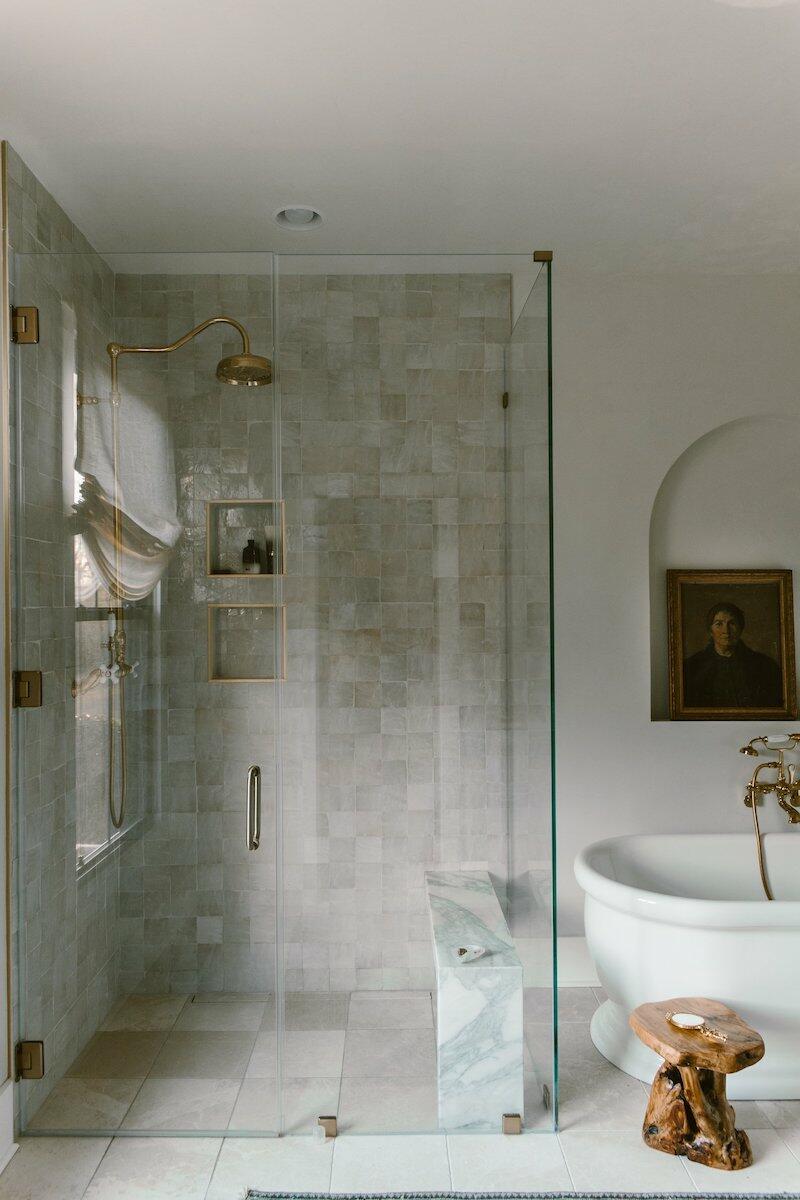
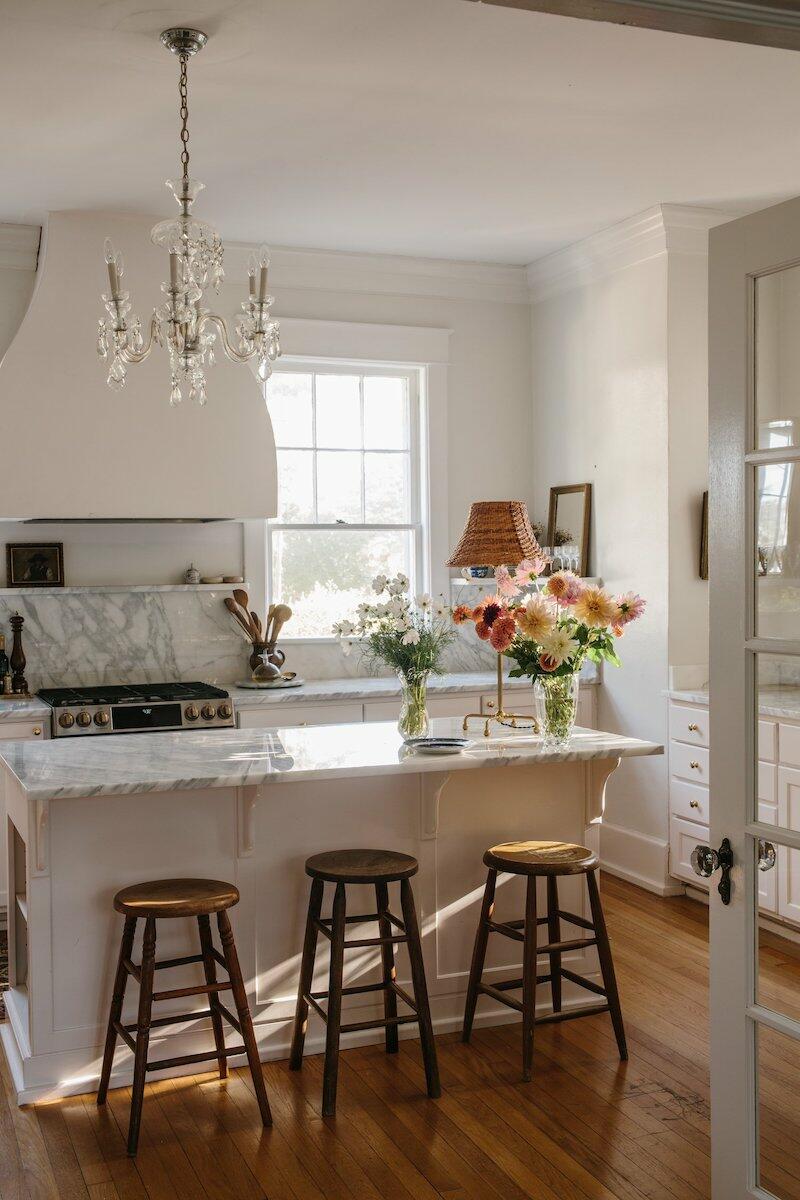
It seems like Instagram has really shaped the trajectory of your business. Were you cultivating a following there intentionally, and what was your approach to the platform?
It just happened. I got on Instagram when there wasn’t an algorithm. If you scroll too far down on my feed, you’ll see pictures of my cat in my sink—I was childish there. Then I started to take what God instilled inside of me and create purpose out of it, and that is when my Instagram started to grow. I put in effort. I made sure that my posts were professional and well composed. Then Justina Blakeney posted a few of my photos on The Jungalow’s Instagram, and I started to get traction.
Nowadays, it doesn’t happen so naturally. I’m pretty active on social media, but I don’t let it run my life either. I think a lot of people are upset with Instagram and the algorithm, but it’s a free platform and it’s free marketing for us. It’s really about how you take advantage of it and you don’t let it bother you. I’ve just allowed it to continue to be organic for me. I also have an in-house videographer who does our high-end videos. And luckily, word of mouth has been helpful for me as well, so I don’t put all my eggs in the Instagram basket, even though it has been a huge blessing to our business.
I’ve been looking at your Instagram feed while we’re talking. You photographed everything there, right?
Yes. That’s what’s nice—I don’t have to hire a photographer when I have to install. We have a big install this Wednesday. I’ll be taking all the photos, and my videographer will be capturing video [that becomes Reels on Instagram].
Do you feel like there is a difference when you get to be the eye behind the camera and tell the story of your own work?
I’ve never had my work photographed by someone else. When I design a space, I know exactly how it’s going to look in photographs. So I actually design in mini vignettes. I have to do an overall picture, but I also think about the fine details of things, because I know how I want it to be photographed and how I want it to be perceived to my audience in the end—that’s why I love being the person who starts it and the one that finishes it.
What has your videographer brought to your business?
Oh, it’s huge. This is why designers should have an internship program—I found her because she applied to work for our summer internship. Our internships are not paid—it’s experience based. She is from Chattanooga, Tennessee, and she had all this interesting background in photography, videography and design. She came and worked for us last summer, which was just as Reels started getting huge on Instagram. She ended up doing some high-def videos for us, and with that we got a campaign with Monogram appliances.
In one video, she was able to break down how I worked through the design process of a dining room, which shows people the creative process behind my brain. At the install on Wednesday and Thursday, she’ll have her high-def DSLR camera and she’s going to be filming the entire process of an install so people can see how a blank space transforms. I don’t have time to make all this content for myself on Instagram, so she’s also curating templates, helping design my website and doing creative direction. It’s been incredibly beneficial. If you don’t have a videographer on your team, you should absolutely contract one out.

How have you approached billing for your work and for your design services over time?
I’ve never worked for another interior designer, so I never learned how someone else has done it—I created my own system. We have an initial consultation and walk-through, whether it’s with plans or in-person if it’s a remodel, to give our suggestions. When we follow up, we give a detailed proposal. We make sure that a contractor is present so that they can hear the changes we’re planning and make sure our suggestions are structurally and architecturally sound, because you can suggest grand ideas that your clients get excited about, and then it’s impossible. After that, we send a detailed proposal and say, “This is how many hours we need to allocate to your project.”
This is where I might vary from other designers, and I don’t know if I’m giving away my secret sauce, but I care more about getting paid for my time than up-charging for products. A lot of designers make tons of money off of products that they’re selling to the client, but I don’t—when I get trade discounts, I offer my clients part of my discount. I charge a lot for my time because I’m there at every site visit, I’m checking in once a week, and I’m making sure that the details are perfect on every project. A lot of our clients really love that because they know that they’re not just getting pushed products so we make money. We don’t charge anything above retail, and if it’s retail, that’s what they get charged. But they’re paying us for our time to be there.
If they approve our proposed hours, we sign an agreement and ask for half the retainer up front. Once they meet that retainer, we give them the option to choose hourly, which is if they want to get billed every 10 to 20 hours, or if they want to finish paying that retainer [at once]. We use QuickBooks to invoice, and my husband is the firm’s CEO, so he runs the operations day in and day out. I get to be the creative voice and don’t have to touch any of the invoicing.
How did you decide that was the best way to talk about money with your clients?
I’ve always cared more about my time than about the product. I just think time is so valuable. I have a client who has two kids, and she’s a stay-at-home mom. If there’s an issue at the house and she can’t run over and answer the contractor, I’m there right away. But that means I have to escape from something else I’m doing. We’re extremely involved in everything that’s going on day-to-day, and our clients really appreciate that. They realize that instead of having to find someone to babysit their kids and run over to the house I can stop what I’m doing and problem-solve for them.
As you’ve grown your team, has that changed the value proposition?
The more people I’ve brought onto the team, the more I’ve had to raise my hourly rate. I now charge $200 an hour.
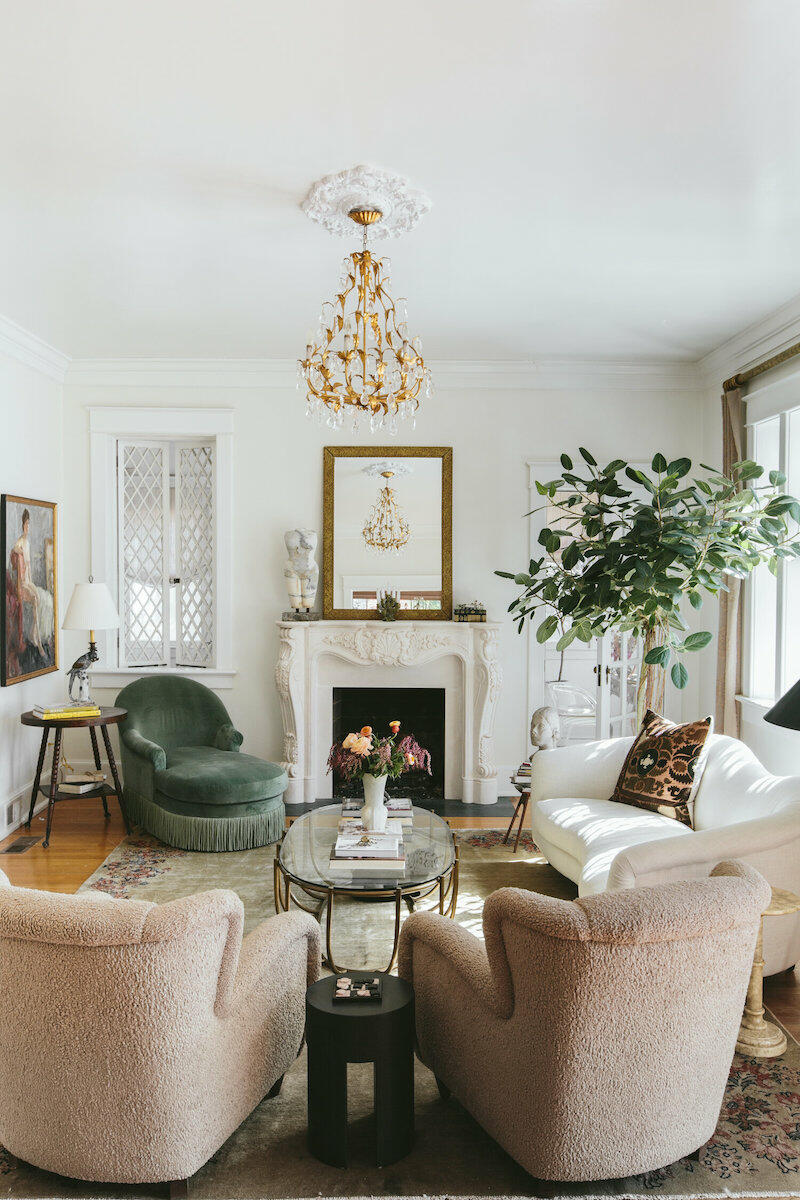
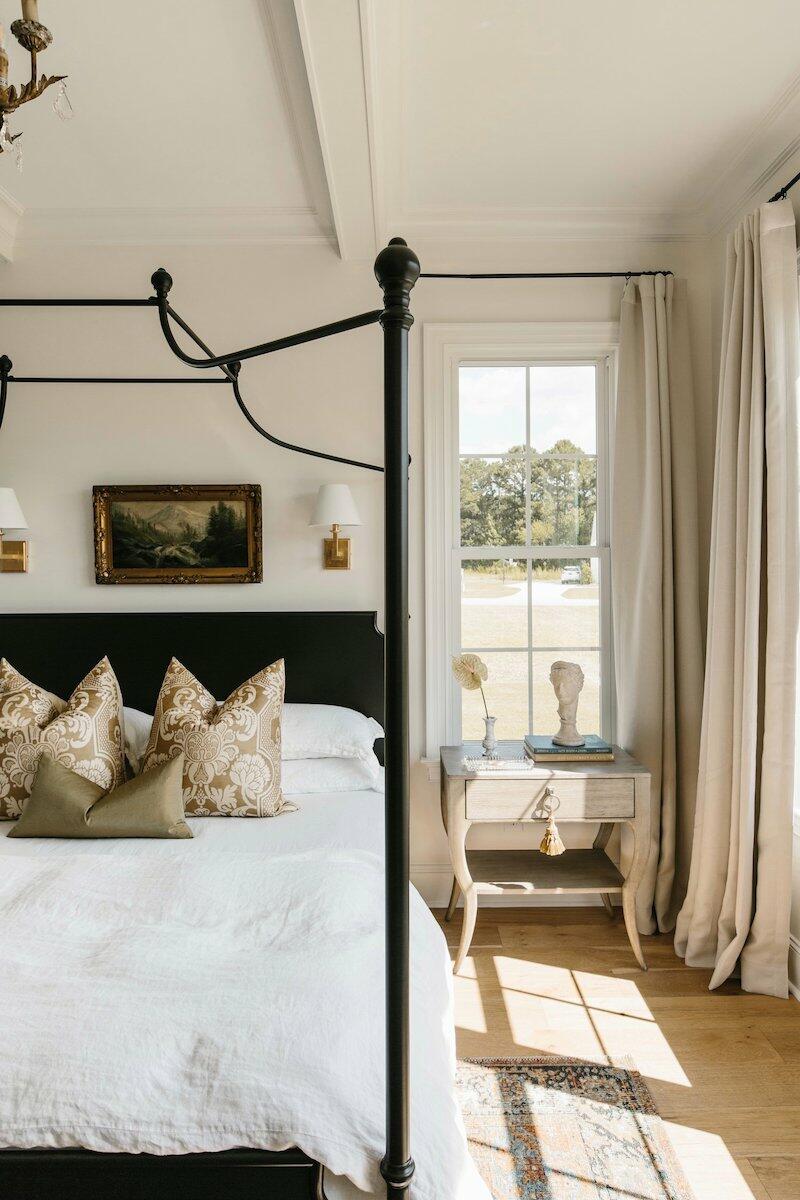
What does your full team look like today? How many people do you have, and what does everybody do?
I’m principal designer, and my husband is CEO. Leah Thompson is my senior designer, and then we have Holly Schumpert, who is our editorial marketing director and an assistant designer as well. So we have four staff members, and then we have two interns. We also had another assistant designer who recently moved to Chattanooga.
I don’t have the desire to grow into a huge 100-person staff. I always want to be a small boutique firm because I live in a small town, and I crave small-town life. I love that Instagram has made me look a certain way, but I also want people to understand the reality that we’re a small team and that we’re still learning and growing. I might eventually hire one more person, but I don’t want to overwhelm myself. I’d rather do a lot for smaller jobs than spread myself too thin and take on too much. I also had a baby two months ago. I only took two weeks off and then jumped back in. My mom’s at home right now watching my baby. That’s why I live in a small town—I can be here with my family.
Two weeks!
Yes, but I have very strong boundaries for my work-life balance, so I think that’s been really healthy for me. I work Fridays, but my team doesn’t work Fridays. We get so much done Monday through Thursday that I think it’s more efficient to work your booties off during the week, and then you start your weekend early. I’ll still check emails, but I find that we are so effective at what we do because we’re getting paid for our time rather than products, that we get so much done during the week. Fridays should be for fun or for a day to run errands or check in with family.
What is the firm’s workload like at the moment?
We have five remodels and new builds going on at one time, which is absolute maximum capacity. Typically, I only want three going at a time, and the only reason why I have five right now is because two are about to wrap up. They were both full-home remodels—they’re big houses, around 5,000 square feet, and every single room is being touched. Every bathroom, every wall, everything remodeled.
For each of those projects, what is your role and when does the client see you?
I have the initial game plan of how I want to execute these things, and I make sure Leah knows my vision. Then, she’ll start creating the 3D rendering. After she’s built everything up and given it a base layer, we’ll walk through each room and I’ll say, “I want this here, and I want that there.” Leah has grown with the business, and she’s developed a great eye. We’ve become super collaborative. So initially it’s my viewpoint, and then Leah understands where I’m going and can run with it. I’m still going to the store and ordering each fabric—I have to approve every single thing that goes out—but my team has really gotten a grasp of how I like things done, which has been so refreshing.
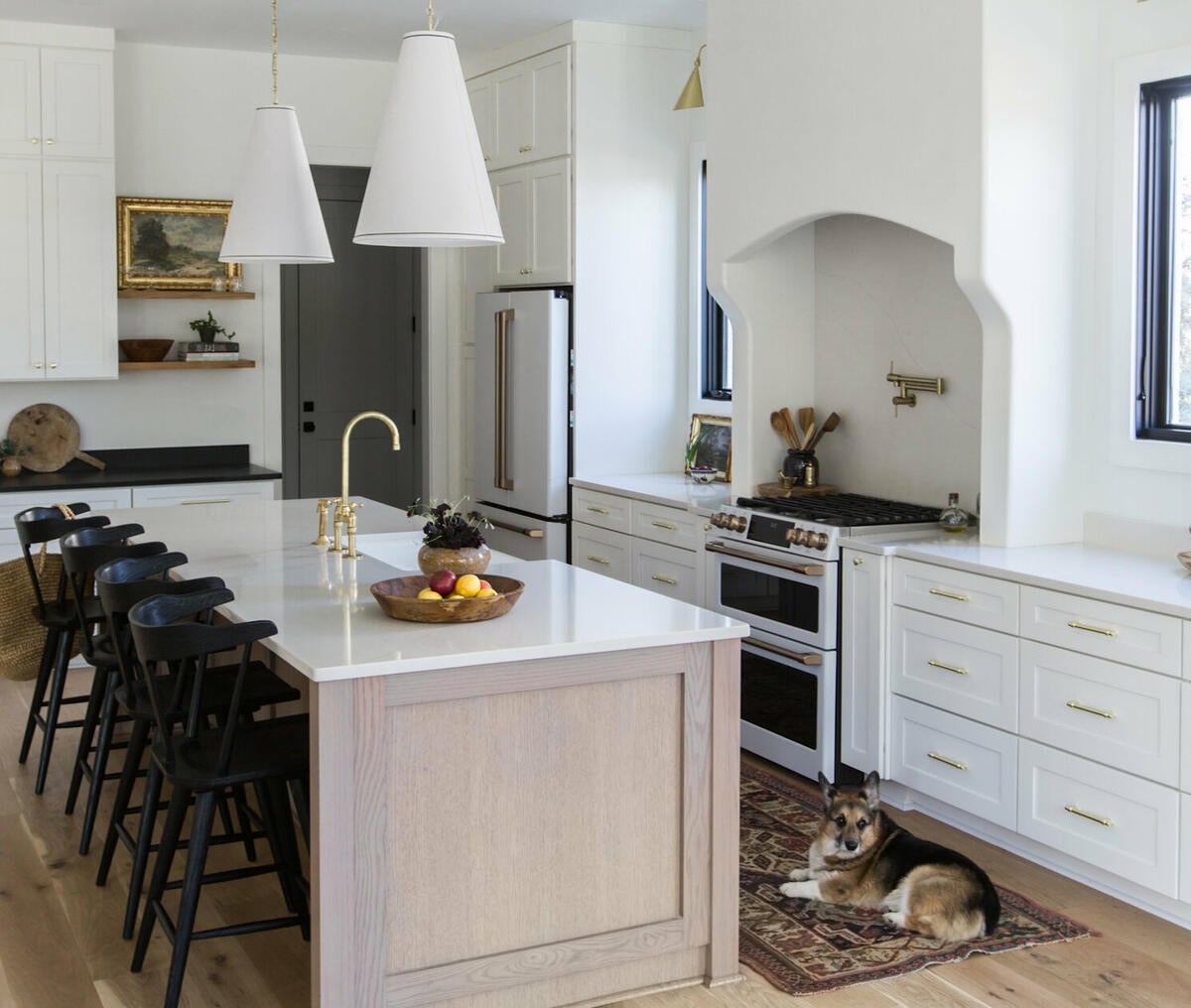
I want to ask you a little bit about your corner of North Carolina. Tell me about where you are, and how that impacts how you shop.
I’m in eastern North Carolina, where there’s either wealth or extreme poverty. I’m not in Los Angeles or New York, so I do not have the kind of clientele that is spending $5 million on a house—it’s just not like that. Some clients have a 2,000-square-foot house, and others have an 8,000-square-foot mansion, so they really range. We’re currently working on a $2.8 million estate in Raleigh, North Carolina, where they’re adding another 3,000 square feet—it is super high end—and we have some houses that are quaint English cottages. We’re not too picky on what we take, but we do require 50 hours or more.
In terms of shopping, we have a local tile company that we love, and they can get in anything that I want because I’ve created vendor relationships where I am. We also shop online, so if I need something from Chairish or Europe, I’m obviously not going to get that at my local tile store. Luckily, I’ve been able to travel all over the world for styling and photography, so I’ve also been able to create other vendor relationships internationally, which has been great. So we’re shopping small, and we’re shopping overseas as well.
We also have a furniture line with River & Bord, which is a true passion project. I took my grandfather’s original midcentury modern sketches and re-created his pieces with small twists to bring something different to the market. I knew I wanted to honor his original creations while adding [my vision], so we added bullion fringe and rolled arms to some of the pieces to give them a bit of European flair. The line has been growing a ton—we doubled our sales this year—and we will now be offering customized pieces on The Expert.
Is High Point a resource for you?
It is a huge resource for me, and luckily we’re only two and a half hours away. We go twice a year to buy tons of inventory for our clients. What’s so cool about High Point is that they have the cash-and-carry vendors on the outside, so you can literally buy the product right there and you don’t have to wait on these long lead times. There are certain [vendors] that we’ve created incredible relationships with, and they make me custom things.
That’s also where I get all my styling goods. My team and I went to two used bookstores last week and bought books to style our client’s shelves. I could have spent thousands and thousands of dollars, but instead I bought 75 books for 100 bucks. There’s age and there’s character, and I really believe in the balance of old and new—some things are new and fancy, and then some are old and worn. I think that the balance of Old World and modern is important in our work.
When you look ahead, where do you see opportunity?
You know what, I’m so pleased with where I’m at. I’m so content. I’m excited, and I’m always pursuing more, but the one thing I don’t want to do is strive too hard, where I’m not appreciating what I have in the present. As far as growth, I take every opportunity as it comes. So honestly, as silly as it sounds, I don’t even think about it. The projects that we’re working on right now are our dream projects. I’m so grateful for my clients, and I’m so content with where we’re at.
If I’m completely honest, I would love to slow down and take on less—give more responsibility over to my team and be more present as a mom. I think so many of us strive and strive and strive to be the best—not that I don’t want to be—but I’ve realized that I want to be excellent at what I do and have a really healthy work-life balance for me and for my team.
My next question was going to be about what success looks like for you, but is it where you are right now?
It is. I live such a blessed life. I’m moving into my forever home, I have an incredible support system, an incredible team, and I just had a baby. Our clients trust and believe in us, and we’ve cultivated friendships with them. We also have a book [of my design photography] coming out in April, which is called Sacred Spaces because of my past and my story of addiction—from not having a place to call home to now having such a sacred and peaceful place for me and my family. We traveled to six countries and photographed 14 amazing homes, and the book honors and tells the stories of people who have walked through trials and created a home that has become a victory for themselves.
I mean, obviously, who wouldn’t want to design an apartment in Paris one day? There are bucket-list items in terms of designing things that are outside your realm. Of course, I want to be challenged in design—I think working those things out with our team is the exciting part. But mostly, I love my relationship with my clients and my team, and that just feels like a huge success.
To learn more about Carley Page Summers, visit her website or find her on Instagram.
Homepage portrait: Carley Page Summers | Christina Cernik





























